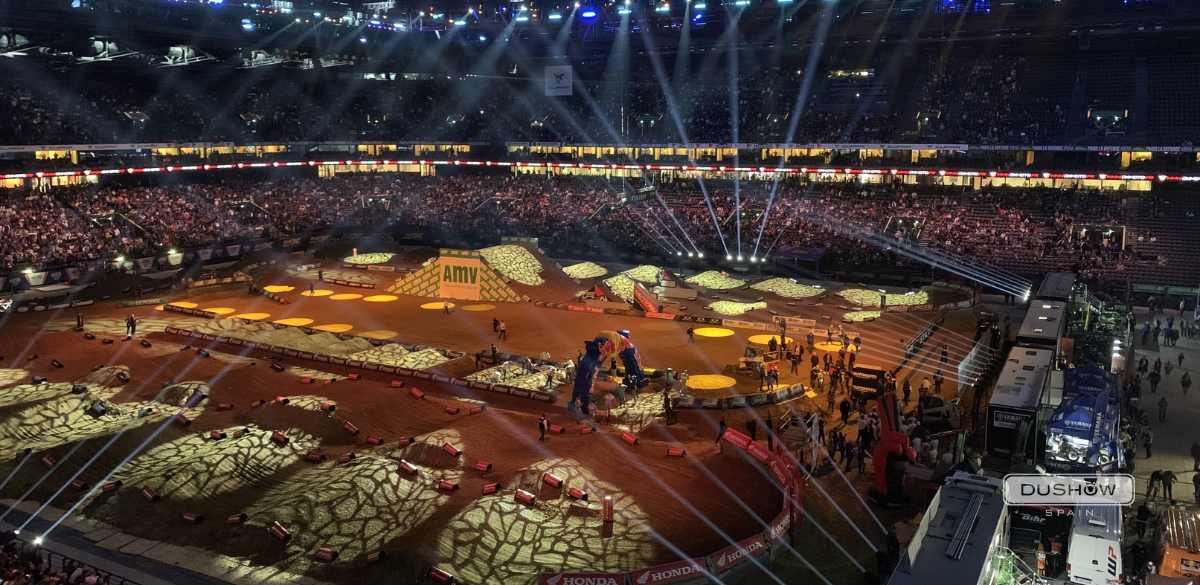Dushow Spain is now Novelty Spain
TECHNICAL ACTION PLAN: HOW TO REDUCE COSTS AND IMPROVE EFFICIENCY AT YOUR EVENTS
Audiovisual technical production is a key element of any event, whether it is a conference, presentation, concert, or product launch. However, the importance of a proper technical action plan for a successful technical audiovisual production is often underestimated.
In this article, we present six key tips to reduce costs and improve efficiency in your events through an effective technical action plan.
1. Define the scope of your event
In the first phase of the technical action plan, it’s important to define your event’s scope of production.
You need to have a clear idea of what you want to achieve. The scope may change depending on the nature of the event and its potential impact on the production infrastructure. Than's why it's very important to detail a technical action plan before to start.
For example, if you want to produce a live event online via streaming, you’ll need to evaluate all the elements and infrastructure that must be put into play for this type of production. On the other hand, if you’re holding a fashion event, the scope and goals will be very different.
Evaluate the event venue
A meticulous evaluation of the venue or space where the event will be held is fundamental to planning the scope of your technical needs.
This includes considering the size and shape of the stage, attendee capacity, availability of electricity, acoustics, and other relevant factors that can influence your technical action plan. Rapid identification of potential technical challenges can help you cut costs as you will be better able to take appropriate measures to mitigate them before the event.
2. Make a list of all necessary resources
Once you’ve defined the scope of your event’s technical production, you can move on to phase two of your technical action planning process. This includes listing all the resources needed for technical production. At the technical level, you can split the resources up into 3 main groups: video, sound and lighting equipment.
If you are considering renting audiovisual equipment, the rates charged for the rentals can vary greatly depending on a number of factors such as the number of days it will be used. Another thing to consider is whether the audiovisual supplier has the required equipment in stock or has to subcontract it. The costs are calculated on the basis of PVP rates per day and per week.
If the equipment is rented without technical staff, you should take special care not to leave it in an unsafe or unsupervised space, as any damage, loss of equipment, or even theft will cost you.
We always recommend adding hiring qualified technical staff to the audiovisual budget. This will save you a lot of headaches!
3. Keep your budget in mind
To set up a realistic technical action plan that is well-suited to your type of event, it’s necessary to have a clear idea of the production costs developing a technical action plan.
Within these costs, include the rental of audiovisual equipment, installation and the technical staff or crew expenses. We recommend you give yourself a little leeway in the budget to cover unforeseen expenses and be able to consider possible extras.
Consider ideas and techniques that will make your event more sustainable. At this point, you’ll have to trust your audiovisual partner and ask for advice on where you can and can’t cut costs.
4. Attention to planning logistics
Logistics is mission-critical in event production, as it covers everything from planning the installation of the equipment to its take-down. The effectiveness of logistics management directly affects the cost-efficiency and quality of the event. Therefore, it’s important to have a very detailed technical action plan that includes items such as:
- Selection of the transport supplier
- Coordination of delivery periods
- Preparation of a storage plan
- Planning the installation and take-down
When it comes to safety, you must comply with the legal safety requirement for event production.
Good planning can help you optimise resources and minimise risks of technical problems and delays at your event.
5. Don’t forget to include test runs and rehearsals
Testing and rehearsals are essential to ensure a successful technical audiovisual production. It is important to conduct pre-event tests to verify that all equipment is working properly and to rehearse the entire event to ensure that everything goes smoothly.
6. Consider renders as a means to reduce costs
Renders are graphic portrayals of how the event will be seen in its entirety. They are digitally generated by a computer in 2D or 3D. This way, organisers can see how the different parts of the event will look, and adjust any detail that doesn’t look the way it should.
We hope that you’ve found this article helpful, and that it’s given you tips you can implement to reduce costs in the technical action planning of your next event. If you’ve found it useful, please make sure to subscribe to our channel and visit our blog to never miss out on any essential content on the technical production and organisation of events.
This article was first published in Novelty Spain, you can read the original Spanish version here.






